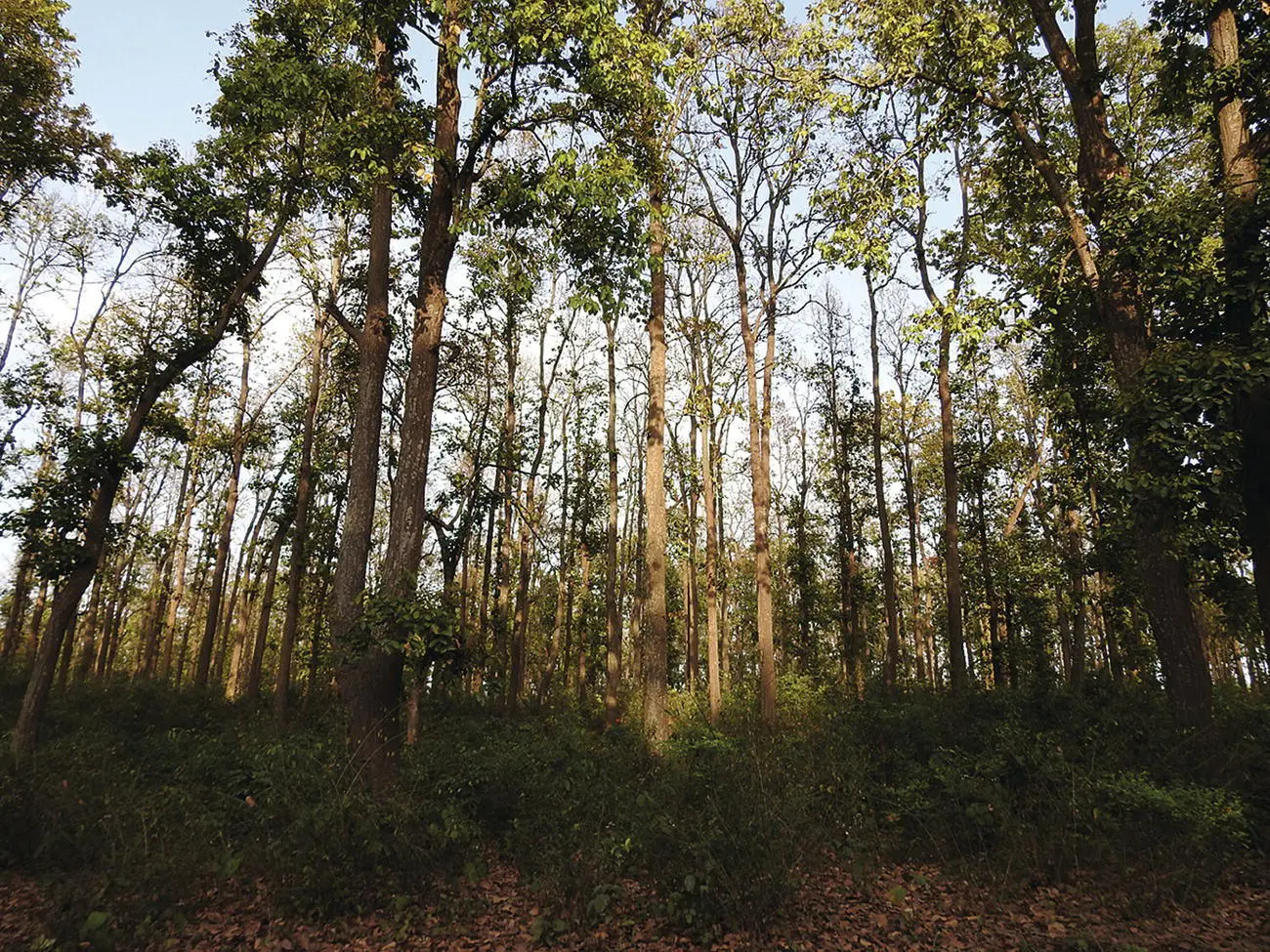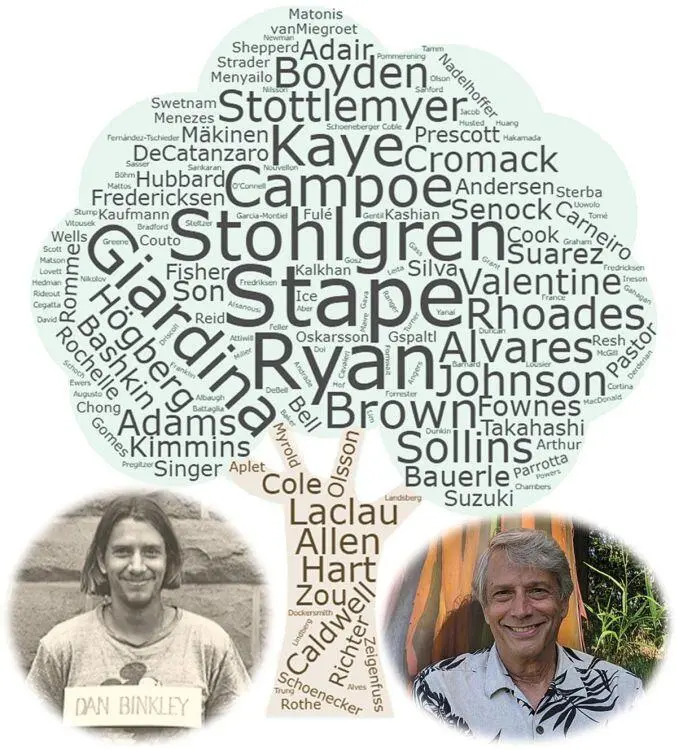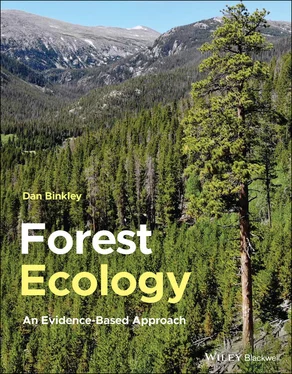Dan Binkley - Forest Ecology
Здесь есть возможность читать онлайн «Dan Binkley - Forest Ecology» — ознакомительный отрывок электронной книги совершенно бесплатно, а после прочтения отрывка купить полную версию. В некоторых случаях можно слушать аудио, скачать через торрент в формате fb2 и присутствует краткое содержание. Жанр: unrecognised, на английском языке. Описание произведения, (предисловие) а так же отзывы посетителей доступны на портале библиотеки ЛибКат.
- Название:Forest Ecology
- Автор:
- Жанр:
- Год:неизвестен
- ISBN:нет данных
- Рейтинг книги:5 / 5. Голосов: 1
-
Избранное:Добавить в избранное
- Отзывы:
-
Ваша оценка:
- 100
- 1
- 2
- 3
- 4
- 5
Forest Ecology: краткое содержание, описание и аннотация
Предлагаем к чтению аннотацию, описание, краткое содержание или предисловие (зависит от того, что написал сам автор книги «Forest Ecology»). Если вы не нашли необходимую информацию о книге — напишите в комментариях, мы постараемся отыскать её.
Forest Ecology
An Evidence-Based Approach Forest Ecology: An Evidence-Based Approach
Forest Ecology: An Evidence-Based Approach
Forest Ecology — читать онлайн ознакомительный отрывок
Ниже представлен текст книги, разбитый по страницам. Система сохранения места последней прочитанной страницы, позволяет с удобством читать онлайн бесплатно книгу «Forest Ecology», без необходимости каждый раз заново искать на чём Вы остановились. Поставьте закладку, и сможете в любой момент перейти на страницу, на которой закончили чтение.
Интервал:
Закладка:
The subject of forest ecology combines two different types of pieces: information (or evidence) about important details, and frameworks for how to knit pieces of information into understanding how forests work. The framework described above repeats throughout the book, along with many case studies and experiments that fill in information. This two‐piece approach shows up in three complementary ways. The section headings state the key points in each chapter; these headings could be grouped together for a simple overview for each chapter. The text of each chapter lays out the information and framework in detail, while the figures reinforce the headings and text with a third dimension of images and graphs (with detailed captions). Each of these three ways contributes to understanding forest ecology, developing a foundation to be built upon with further conversations, with readings of other books and journals, and especially with curious explorations in forests and across landscapes.
Forests Are Complex Systems That Are Not Tightly Determined
A core idea in this book is that forests are indescribably complex systems, with an uncountable number of interacting pieces under the influence of external driving factors. Simple stories cannot provide high value for specific cases, because the future development of a forest simply is not constrained enough to allow precise predictions. The good news is that evidence from thousands of research investigations around the world does provide a foundation for useful general insights. The next step is to apply general questions – from the core framework and core methods – to any forest of interest to develop strong, locally relevant knowledge. This book tries to clarify some of the basic nature of forests, and how to rely on evidence as a guide for gauging the amount of confidence warranted in ideas about forests.
A different forest ecology book could be written to summarize what we know about the major features of forests: for a very wide variety of questions, what solid answers emerge for each question from the evidence accumulated over the decades and centuries? That approach would provide a strong reference source for describing the general trends for forests, how variable they are, and what factors account for when forests are likely to be above or below the general trends. The focus of this book is somewhat different, though, as it fosters the thinking and understanding that will provide a strong foundation for adding later evidence found in reference books, journals, and other sources.
The future is not yet written for any forest, and that's also true about this book. If revised editions should appear in the future, they would be much improved by feedback provided by readers of this edition. I gratefully invite feedback about typos, mistakes, omissions, and ideas for how the stories could be stronger and warrant more confidence ( Dan.Binkley@alumni.ubc.ca).
The final introductory point is that this book could be rewritten with all of the graphs and all of the examples switched out with different examples from other forests in other locations and other times. For example, sal ( Shorea robusta ) is a major, important tree in forests across southern Asia ( Figure E), but this is the only sentence in the book that mentions sal. Each reader can make use of the book's questions and perspectives by adding local information for other forests types, other places, and other times.

FIGURE E Sal is a major species across southern Asia, just one species of 700 among 16 genera in the Dipterocarp family. Sal wood is valued for lumber, its leaves are used for various purposes (including plates for food), and oil extracted from its seeds are used in food and mechanical applications
( Source:photo by Anand Osuri).
Acknowledgements

It takes a virtual village to write a book, and I want to acknowledge and thank the villagers whose insights shaped this book, and my career. Each of my university advisors contributed new dimensions to thinking about forest ecology. Wally Covington at Northern Arizona University set the stage, and brought out interests in connecting chemistry and ecology. Hamish Kimmins at the University of British Columbia broadened my experiences, and patiently endured my skeptical challenges of so many ideas. Kermit Cromack's curiosity and enthusiasm across a broad range of ecology and science was infectious – and persistent. Ed Packee at MacMillan Bloedel provided the questions, insights, funding and free reign that were so important early in my career. Colleagues and students at Duke University's School of Forestry and Environmental Studies could not have done a better job of sustaining the momentum provided by earlier members of the village. The worldwide community of scientists in forest ecology and forest soils provided collaboration, ideas, and education over the following decades. Some of the most generous villagers were Tom Stohlgren, Mike Ryan, Peter Högberg, Bill Romme, Bob Powers, Dale Johnson, Jose Luiz Stape and Bob Stottlemyer. Most of my career developed at Colorado State University, with world‐class colleagues and students. I cannot conceive of any village that would have been more fun, more supportive, or more productive; this tree acknowledges coauthors across four decades, with font sizes proportional to how many works we wrote together. Thanks to all of you – and to Mason Carter and Jane Higgins for working through and polishing these chapters. There are many ways a forest ecology textbook could be written; this is the one I could write.
CHAPTER 1 The Nature of Forests
To see a World in a Grain of Sand,
And a Heaven in a Wild Flower,
Hold Infinity in the palm of your hand,
And Eternity in an hour.…
William Blake (1757–1827)
William Blake's poetic approach of seeing the general in the specific is a useful approach, two centuries later, for launching into the ecology of forests. The biology of a single tree in a single hour connects outward in time to the course of the tree's development from a seed, back through evolutionary time for the genes comprising the tree's genome. The environmental influences on the tree also connect outward in space, with strong similarities to the forces shaping trees around the world. The value of this literary approach to describing and understanding forests has limits: trees comprise the greatest part of the living matter within a forest, but the vast majority of organisms and species in forests are not trees at all. The biodiversity of forests resides primarily in understory plants, animals, and especially very small organisms such as arthropods, fungi, and bacteria.
The ecology of forests can be explored using Blake's approach of starting very small to begin to understand very large and complex systems. The hourly, daily, and annual story for a single tree can be expanded outward to encompass the other trees in a forest, a landscape, and the forest biome, just as an hour can be expanded to a day, a year, a millennium, and evolutionary timescales.
Forest Ecology Deals with Individual Trees Across Time
A tulip poplar in the Coweeta Basin of eastern North America will be the launching point for developing insights about forests. This particular tree ( Figure 1.1) would be over half a meter in diameter (at a height of 1.4 m above the ground, a common point for measuring) and over 30 m tall. Eighty years of biological processes have led to an accumulation of more than 1000 kg of wood, bark, leaves, and roots. The actual living weight of the living tree would be about twice this mass of the biomass, because trees typically contain as much water as dry matter.
Читать дальшеИнтервал:
Закладка:
Похожие книги на «Forest Ecology»
Представляем Вашему вниманию похожие книги на «Forest Ecology» списком для выбора. Мы отобрали схожую по названию и смыслу литературу в надежде предоставить читателям больше вариантов отыскать новые, интересные, ещё непрочитанные произведения.
Обсуждение, отзывы о книге «Forest Ecology» и просто собственные мнения читателей. Оставьте ваши комментарии, напишите, что Вы думаете о произведении, его смысле или главных героях. Укажите что конкретно понравилось, а что нет, и почему Вы так считаете.












